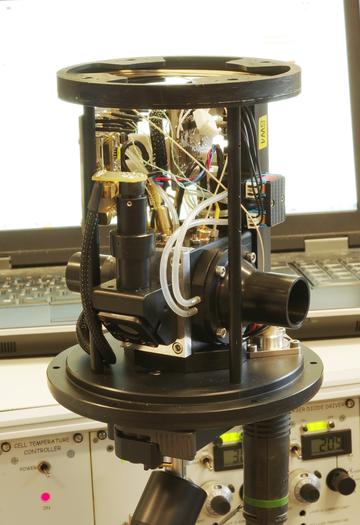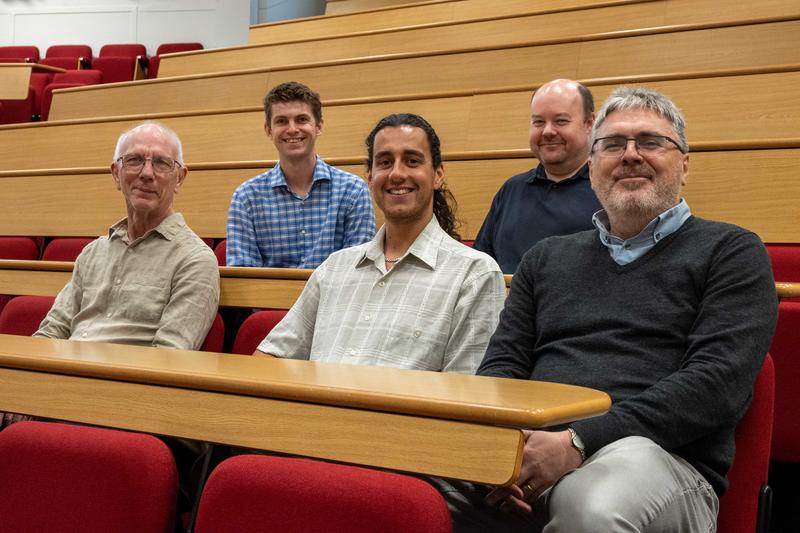A new project led by researchers from the Department of Chemistry aims to develop a novel breathing test that could detect asthma and COPD earlier, more accurately, and closer to home.

A photo of a molecular flow sensor. This sensor allows the highly accurate measures of gas exchange that form the input for CCP modelling.
This work is included in a portfolio of research funded by the Engineering and Physical Sciences Research Council (EPSRC), part of UK Research and Innovation, to make diagnostic testing more accessible by designing simple, affordable tools that can be used in everyday settings, reducing pressure on the NHS and improving outcomes for patients.
Project lead Professor Grant Ritchie (Department of Chemistry) said: ‘To improve lung health, we need to move from fire-fighting advanced disease to detecting and treating it earlier, when it is still possible to prevent progression. With EPSRC support, we are developing a rapid, non-invasive breath test that could provide immediate results in community diagnostic settings and transform early diagnosis.’
Asthma and COPD affect over half a billion people worldwide, causing more than four million deaths each year. In the UK, these conditions hit disadvantaged communities hardest, and diagnosis still relies on spirometry — a test that’s hard for many patients to perform and often misses disease until lung damage is irreversible.
Oxford researchers have created a new test, computed cardiopulmonography (CCP), which measures breathing over 12 minutes using advanced laser gas analysis and modelling to capture a detailed picture of how evenly air flows through the lungs. Early studies show it can spot subtle damage missed by spirometry, but for now it remains confined to hospitals and labs due to its complexity and specialist equipment.
The project aims to adapt CCP for community use in GP surgeries, pharmacies, and diagnostic hubs by shortening test time, reducing gas requirements, and speeding up analysis so patients can receive results immediately. It will be trialled in a community diagnostic centre to gather feedback, with the long-term goal of enabling earlier diagnosis and treatment, reducing hospital visits, and tackling health inequalities to improve outcomes for millions with lung disease.

The project's research group. Back row (left to right): Dr Nick Smith, Dr Graham Richmond. Front row (left to right): Mr John Couper, Dr Dominic Sandhu, Professor Grant Ritchie.
Project lead Professor Grant Ritchie said:
The project is enabled by the strong ethos for collaborative and innovative research in this University and will be delivered by a multi-disciplinary team, working across university departments and the NHS.
The highly multidisciplinary project brings together researchers from Oxford University’s Department of Chemistry; Department of Physiology, Anatomy & Genetics; Nuffield Department of Medicine & NIHR Oxford Biomedical Research Centre; Nuffield Department of Primary Care Health Sciences & the Oxford NIHR Healthtech Research Centre (HRC). They will collaborate with healthcare providers, the national charity Asthma + Lung UK, and patients with asthma and COPD to shape the research at every stage. Patients, including those from disadvantaged communities most affected by airways disease, will meet regularly with investigators to advise on study design and delivery.
Read more from the University of Oxford here.